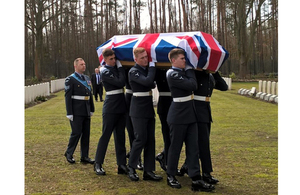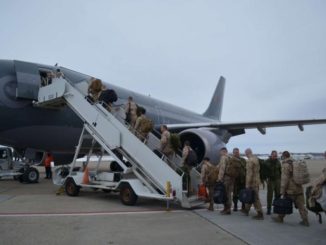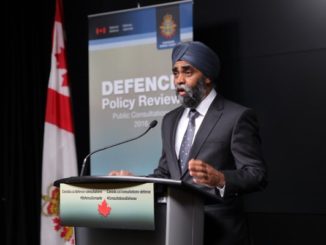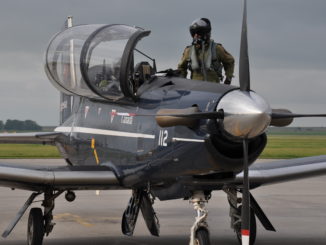
The United Kingdom’s Ministry of Defence laid to rest Second World War airman Sergeant Wilfred Lawson of the Royal Air Force at the Berlin 1939-1945 War Cemetery on March 16, 2017. The Department of National Defence (DND) assisted in the identification of this missing British airman when his remains were found three years ago.
Sergeant Lawson was killed the night of January 27-28, 1944, when his Lancaster II bomber, LL721 from 426 Squadron, was shot down near Berlin. The six other crew members were with the Royal Canadian Air Force (RCAF). Three of them survived and were taken prisoner; two died and were buried in the Berlin 1939-1945 War Cemetery. The remaining two crew members (Sergeant Lawson and RCAF Pilot Officer Alfred Carlson) were declared missing.
On August 16, 2014, parts of the bomber were recovered in Germany, with the remains of one crew member, believed to be Sergeant Lawson. When DNA testing with one of Sergeant Lawson’s descendants proved inconclusive, DND offered to arrange a test with a descendant of Pilot Officer Carlson. The result excluded him as a match, allowing for the positive identification of Sergeant Lawson’s remains. As a result, he may now be laid to rest with a name by his unit.
The families of both Sergeant Lawson and Pilot Officer Carlson were invited to attend the funeral service.
Quotes
“We are pleased to have been able to support the United Kingdom’s Ministry of Defence in identifying Sergeant Lawson, making it possible for him to be laid to rest with a name by his unit. We will not forget him, our own Pilot Officer Carlson, nor the other five Canadian members of the aircrew of flight LL721. They gave everything they had for the war effort.”
— Harjit S. Sajjan, Defence Minister
“Sergeant Lawson gave his life for his country, as did so many thousands of Allied sailors, soldiers and airmen during the Second World War. We are grateful for the opportunity to commemorate him, and his Canadian colleagues, alongside our friends in the United Kingdom.”
— Kent Hehr, Veterans Affairs Minister and Associate Minister of National Defence
Quick Facts
- DND’s Casualty Identification Program worked with its British counterpart, the Joint Casualty and Compassionate Centre of the UK Ministry of Defence, to have the DNA profile of the remains sent to Canada for comparison against a genetic sample from Pilot Officer Carlson’s family. DND received the results, and the sample for Pilot Officer Carlson’s relative excluded him from being a paternal descendant of the remains.
- DND’s Casualty Identification Program, within the Directorate of History and Heritage, exists to identify unknown soldiers and airmen when their remains are discovered, so that they may be buried with a name, by their Regiment, and in the presence of their family. In meeting this aim, the program fosters a sense of continuity and identity within the Canadian Armed Forces (CAF), as it provides an opportunity for all Canadians to reflect upon the experiences of those men and women who made the ultimate sacrifice for their country.
- The program, which uses a combination of historical and scientific research to identify remains and properly lay to rest those who have made the ultimate sacrifice for Canada, has successfully identified 22 Canadians and 19 people of other nationalities to date.
Photo from: www.gov.uk




Leave a Reply